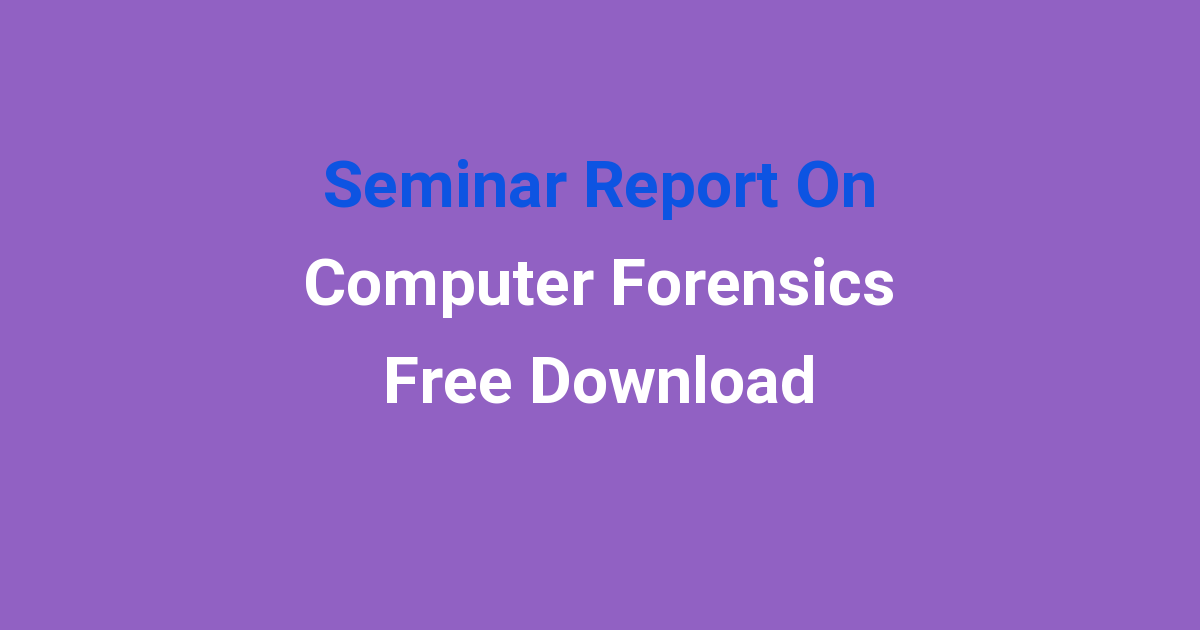Free download of a seminar report on computer forensics.
Introduction
Computer forensics is a branch of digital forensic science that deals with the investigation and analysis of digital devices and data to collect evidence for legal purposes. It plays a crucial role in solving cybercrimes and other digital offenses. As a student pursuing a Bachelor of Technology in India, I embarked upon a project to delve deeper into computer forensics and explore ways to enhance the existing system.
Problem Statement
The existing system of computer forensics faces several challenges and limitations. One of the major issues is the lack of comprehensive tools and techniques to extract and analyze data from various digital devices. This often leads to delays in investigations and compromises the integrity of evidence. Moreover, the growing diversity of digital devices and storage formats poses a significant challenge for investigators.
Existing System
The current system of computer forensics relies on a set of standard tools and procedures for data collection, preservation, and analysis. These tools are often limited in their functionality and compatibility with different devices and operating systems. This restricts the scope of investigations and hampers the efficiency of the forensic process. Additionally, the reliance on manual processes for data extraction and analysis can lead to human errors and inconsistencies.
Disadvantages
The disadvantages of the existing system in computer forensics are numerous. Some of the key drawbacks include:
– Limited scope of investigations due to incompatible tools and techniques
– Time-consuming and error-prone manual processes
– Lack of automation and optimization in data extraction and analysis
– Vulnerability to data tampering and loss of evidence
– Inability to handle complex data formats and storage devices
Proposed System
To address the limitations of the existing system, I propose the development of a new and advanced computer forensics tool. This tool will incorporate cutting-edge technologies such as artificial intelligence and machine learning to enhance data extraction, analysis, and preservation. It will also feature a user-friendly interface with automated processes to improve the efficiency and accuracy of investigations.
Advantages
The proposed system for computer forensics offers several advantages over the existing system, including:
– Enhanced data extraction and analysis capabilities
– Improved compatibility with a wide range of devices and operating systems
– Automation of processes for faster and more accurate investigations
– Enhanced security features to prevent data tampering and loss
– Support for complex data formats and storage devices
Features
Some of the key features of the proposed computer forensics tool include:
– Intelligent data extraction algorithms for faster and more accurate analysis
– Compatibility with a wide range of digital devices and storage formats
– User-friendly interface with intuitive controls and visualization tools
– Automated processes for data preservation and chain of custody management
– Security measures to ensure the integrity and confidentiality of evidence
Conclusion
In conclusion, the field of computer forensics plays a crucial role in combating cybercrimes and ensuring the integrity of digital evidence. As a student pursuing a Bachelor of Technology in India, I have identified the limitations of the existing system and proposed a new and advanced computer forensics tool to overcome these challenges. By incorporating cutting-edge technologies and features, this tool has the potential to revolutionize the field of computer forensics and enhance the efficiency and accuracy of digital investigations. I believe that this project will contribute significantly to the advancement of forensic science and help law enforcement agencies in their fight against cybercrimes.

